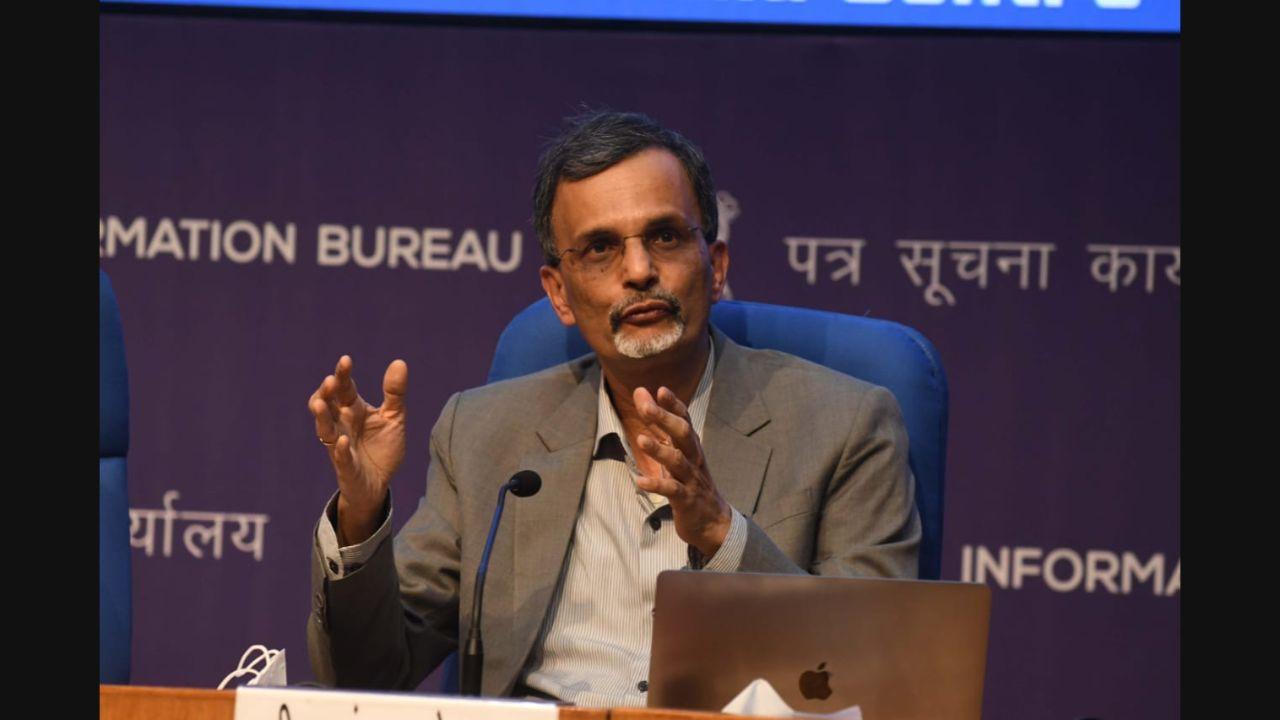The government has taken various steps to support lower income categories, he said in an interaction with the media on the Survey tabled in Parliament by Finance Minister Nirmala Sitharaman

V Anantha Nageswaran. Pic/Pallav Paliwal
Pinning hopes on rapid vaccination drive, newly appointed Chief Economic Advisor (CEA) V Anantha Nageswaran said that abatement of the Covid-19 pandemic would kick in virtuous cycle investment leading to job creation.
ADVERTISEMENT
The government has taken various steps to support lower income categories, he said in an interaction with the media on the Survey tabled in Parliament by Finance Minister Nirmala Sitharaman earlier in the day.
Naturally, he said, it will take time to regain confidence because the slowdown in consumption spending is not only a function of the lack of income growth, but also because of the uncertainty caused by the pandemic and health impact etc. "So once the pandemic cloud itself is lifted, and many of the contact services come back into their pre-pandemic level...we hope that along with the various measures that the government has taken and private sector capex also kicking in, we will go into a virtuous circle of income generation and employment generation," he said.
He said the construction sector is beginning to revive and that's one of the highest employers in the country. Nageswaran expressed hope the consumption share of GDP which is about 97 per cent, compared to the pre-pandemic level, especially in the second half of the new financial year, should come back into stream assuming that the subsequent impacts of pandemic turns out to be "milder and milder". "The government has pursued the four-pronged approach -- the short term support to the economy especially to the vulnerable section during these uncertain times, while keeping a firm eye on the fiscal stability. At the same time, never to let go the opportunity that a crisis provides to initiate structural and supply-side reforms. The government has undertaken several measures as well," he said.
There's been considerable attention and emphasis on process reforms as well, he said, adding, so these are the four pillars of the government's approach in dealing with the pandemic and also to prepare the economy for a post pandemic world. Asked about inflation, Principal Economic Adviser Sanjeev Sanyal said CPI has been in the tolerance zone. Overall, Sanyal said macro-economic stability indicators suggest that the Indian economy is well placed to take on the challenges of 2022-23. Last two years have been particularly challenging for policy-making around the world with repeated waves from a mutating virus, travel restrictions, supply-chain disruptions and, more recently, global inflation.
"Faced with all this uncertainty, the Government of India opted for a 'Barbell Strategy' that combined a bouquet of safety-nets to cushion the impact on vulnerable sections of society/business, with a flexible policy response based on a Bayesian updating of information," he said. As explained in last year's Economic Survey, he said this is a common strategy used in financial markets to deal with extreme uncertainty by combining two seemingly disparate legs.
As some readers will have guessed, the iterative leg of this strategy is the same as the "Agile" approach that uses feedback-loops, and real-time adjustment, he said, adding, the Agile approach is a well-established intellectual framework that is increasingly used in fields like project management and technology development. In an uncertain environment, the Agile framework responds by assessing outcomes in short iterations and constantly adjusting incrementally, he said.
"It is important here to distinguish Agile from the Waterfall framework which has been the conventional method for framing policy in India and most of the world. The Waterfall approach entails a detailed, initial assessment of the problem followed by a rigid upfront plan for implementation. This methodology works on the premise that all requirements can be understood at the beginning and therefore pre-commits to a certain path of action," he said. This is the thinking reflected in five-year economic plans and rigid urban master-plans, he added.
This story has been sourced from a third party syndicated feed, agencies. Mid-day accepts no responsibility or liability for its dependability, trustworthiness, reliability and data of the text. Mid-day management/mid-day.com reserves the sole right to alter, delete or remove (without notice) the content in its absolute discretion for any reason whatsoever.
 Subscribe today by clicking the link and stay updated with the latest news!" Click here!
Subscribe today by clicking the link and stay updated with the latest news!" Click here!







